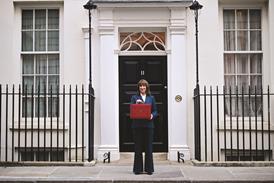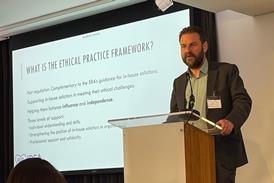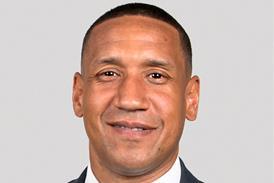In January, the Home Office published its long-awaited review of counter-terrorism and security powers.
Amid all the headlines and controversy about control orders for suspected terrorists, it is easy to miss the proposed changes to local authorities’ powers to carry out surveillance under the Regulation of Investigatory Powers Act 2000 (RIPA). The changes will be given legislative force through amendments to RIPA set out in the Protection of Freedoms Bill (published on 11 February) which is going through parliament.
RIPA came into force on 2 October 2000. It regulates, among others, local authorities when conducting covert surveillance and accessing communications data. This is done by requiring applications for the doing of the same to be made in writing to a senior officer within the authority. That officer has to decide whether the surveillance is necessary and proportionate and, if so, approves the application. Before the 2010 general election, both coalition parties promised to overhaul RIPA. They argued that surveillance was often used by local authorities to investigate minor offences and in a disproportionate manner. They pointed to newspaper headlines about the number of surveillance operations being carried out by ‘town hall spies’ to monitor dog fouling and littering.
Magistrates’ approvalChapter 2 of part 2 of the bill (clauses 37 and 38) amends RIPA, so as to require local authorities to obtain the approval of a magistrate (lay or legally qualified) for the use of any one of the three covert investigatory techniques available to them under RIPA. An approval is also required if an authorisation to use such techniques is being renewed. In each case, the role of the magistrate is to ensure that the correct procedures have been followed and the appropriate factors have been taken into account. The new provisions allow the magistrate, on refusing an approval of an authorisation, to quash that authorisation.
Communications dataChapter 2 of part 1 of RIPA allows local authorities, as well as others, to access communications data about an individual from any Communications Service Provider (CSP) (for example, a telephone or mobile phone service provider). Often these powers are used by, among others, benefit fraud investigators and trading standards officers to carry out mobile phone subscriber checks and to request itemised call records.
A new section 23A will be added to chapter 2 of part 1 of RIPA. An authorisation or notice to obtain communications data from a CSP shall not take effect until a magistrate has made an order approving it. The magistrate must be satisfied that:
a) There were reasonable grounds for the designated person (the person authorising the obtaining of the data) within the local authority to believe that obtaining communications data was necessary and proportionate and that there remain reasonable grounds for believing so;
b) The designated person was of the correct seniority within the local authority in accordance the Regulation of Investigatory Powers (Communications Data) Order 2010 (SI 2010/480), that is director, head of service, service manager or equivalent;
c) The granting or renewal of the application was only for the prescribed type of communications data to be acquired for the prescribed purpose as set out in the above order (that is, subscriber and service use data, for example, mobile phone subscriber information and itemised call records, to be acquired only for the purpose of preventing or detecting crime or preventing disorder);
d) Any other conditions set out in an order made by the secretary of state under chapter 2 of part 1 are satisfied (none at present).
Directed surveillance and CHISClause 38 of the bill makes similar provision for magistrate approval of local authority authorisations for the use of directed surveillance and the deployment of a covert human intelligence source (CHIS). It does this by adding a new section 32A to part 2 of RIPA.
Directed surveillance is often conducted by local authorities to, among other things, investigate a benefit fraud or to collect evidence of anti-social behaviour. Typical methods include covertly following people, covertly taking photographs of them and using hidden cameras to record their movements.
A CHIS is defined in section 29(8) of RIPA as someone who establishes or maintains a personal or other relationship with a person for the covert purpose of using the relationship to provide or obtain information. Typical examples, in a local authority context, include an informant regularly disclosing information about benefit fraudsters who are working in a factory, or a witness on a housing estate disclosing information about anti-social behaviour.
Once again the internal authorisation for such surveillance methods is not to take effect until such time (if any) as a magistrate has made an order approving it (section 32A(2)). Approval can only be given if the magistrate is satisfied that:
a) There were reasonable grounds for the authorising officer approving the application to believe that the directed surveillance or deployment of a CHIS was necessary and proportionate and that there remain reasonable grounds for believing so;
b) The authorising officer was of the correct seniority within the organisation, that is a director, head of service, service manager or equivalent as per the Regulation of Investigatory Powers (Directed Surveillance and Covert Human Intelligence Sources) Order 2010 (SI 2010/521) (‘the 2010 Order’);
c) The granting of the authorisation was for the prescribed purpose, as set out in the 2010 order, that is preventing or detecting crime or preventing disorder;
d) Any other conditions set out in any order under part 2 of RIPA are satisfied (none at present).In addition to the above, where the authorisation is for the deployment of a CHIS, the magistrate must be satisfied that:
e) The provisions of section 29(5) have been complied with. This requires the local authority to ensure that there are officers in place to carry out roles relating to the handling and management of the CHIS, as well as the keeping of records (as per the Regulation of Investigatory Powers (Source Records) Regulations 2000 (SI 2000/2725));
f) Where the CHIS is under 16 or 18 years of age, the requirements of the Regulation of Investigatory Powers (Juveniles) Order 2000 (SI 2000/2793) have been satisfied. This sets out rules about parental consent, meetings, risk assessments and the duration of the authorisation. Note that the authorisation of such persons to act as a CHIS must come from the chief executive;
g) Where the application is for the renewal of a CHIS authorisation, a review has been carried out by the local authority and the magistrate has considered the results of the review.
The new provisions make it clear that the authorising officer is not required to apply in person and there is no need to give notice to either the subject of the authorisation or their legal representatives (Section 23B (2) and 32B(2)). This reflects the covert nature of the exercise of the investigatory powers under RIPA.
Directed surveillance and the serious offence testThe Home Office review also recommended that where local authorities wish to use RIPA to authorise directed surveillance, this should be confined to cases where the offence under investigation carries a custodial sentence of six months or more. This recommendation is to be put into effect by an order made under RIPA itself (section 30(3)(b) of RIPA).
There is an exception to the new rule. The review recommends that because of the importance of directed surveillance in corroborating investigations into underage sales of alcohol and tobacco, the government should not seek to apply the threshold in these cases. This concession is a direct result of lobbying by the Local Government Association and will be welcome news to trading standards officers.
The Home Office says that the six-month threshold test will mean ‘minor offences’ will not be the subject of surveillance any more. But what is a minor offence? Dog fouling and littering may not seem as serious as benefit fraud, but these offences are the subject of daily complaints to local authorities and ward councillors up and down the country.
The new RIPA codes of practice accompanying the bill’s changes to the local authority surveillance regime will spell out precisely how the magistrate approval process will work. The Home Office, in its impact assessment of the bill, states that each application will take 20 minutes to hear. In reality, a much longer time will be required, certainly in the early days, for magistrates to understand this complex piece of legislation and to ensure they get the balance right between the privacy of the citizen and the rights of wider society.
Many local authorities will feel that the changes to RIPA in this bill are a disproportionate response to inaccurate media stories. They are more about the coalition government wanting to be seen to take a tough stance on civil liberties rather than any well placed concern about the misuse of RIPA powers. Most authorities only use their powers in a handful of cases each year and only when there is no other viable means of investigating offences and then in a reasonable and proportionate manner (see the recent report about Kirklees Council).
Like them or loathe them, the changes to the RIPA regime will have a profound impact on local authority investigators, especially in trading standards, environmental health, benefit fraud and licensing teams. The added scrutiny of authorisation forms by magistrates will increase the importance of staff training and guidance on completing such forms correctly.
Ibrahim Hasan is a solicitor and director of Act Now Training Ltd .



























No comments yet